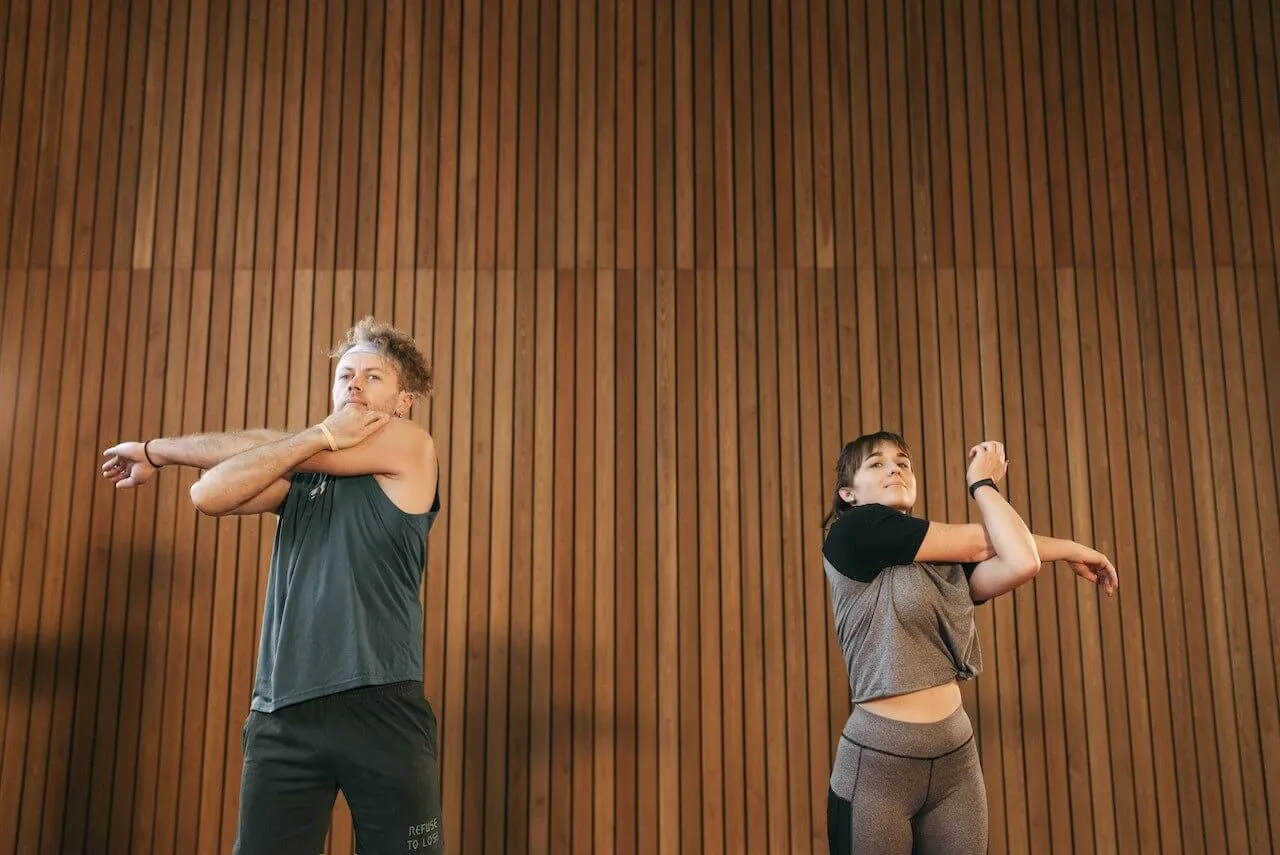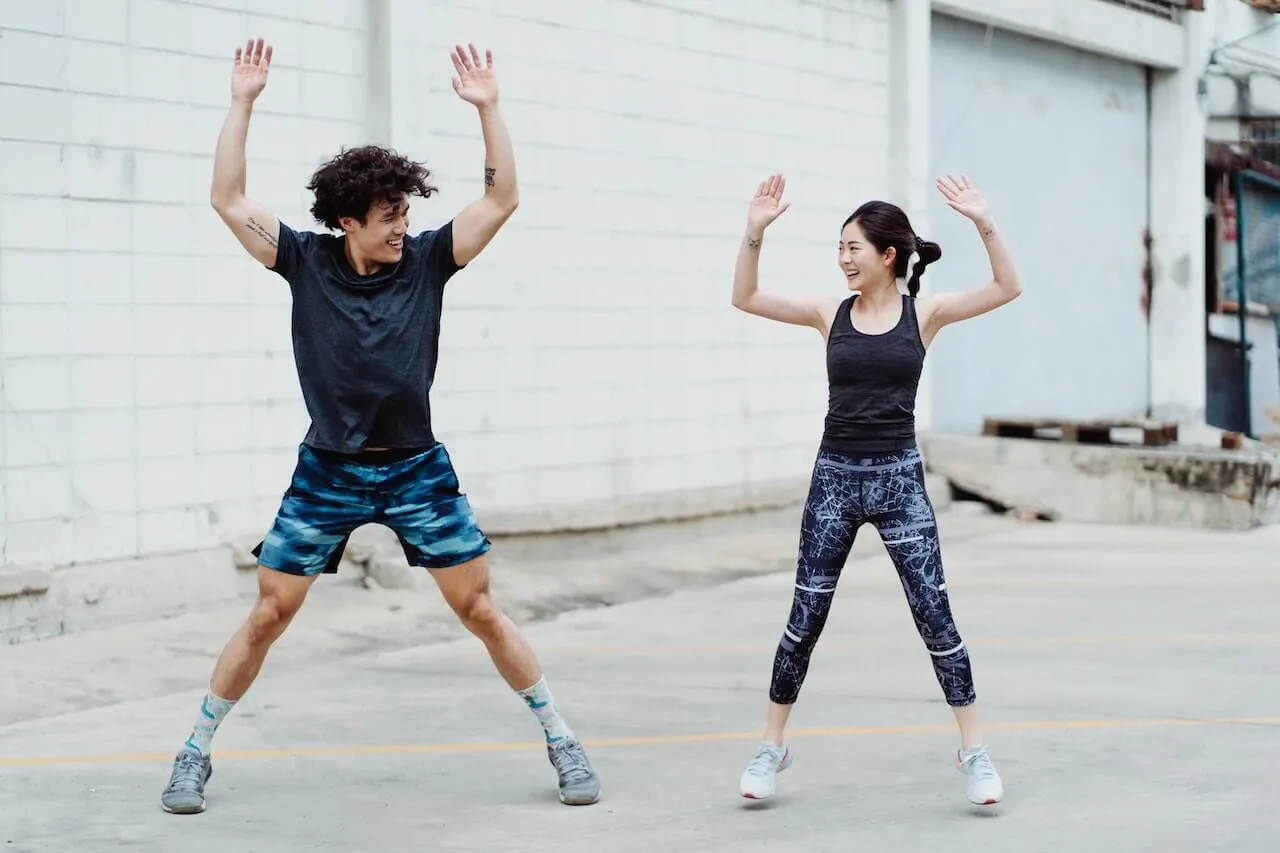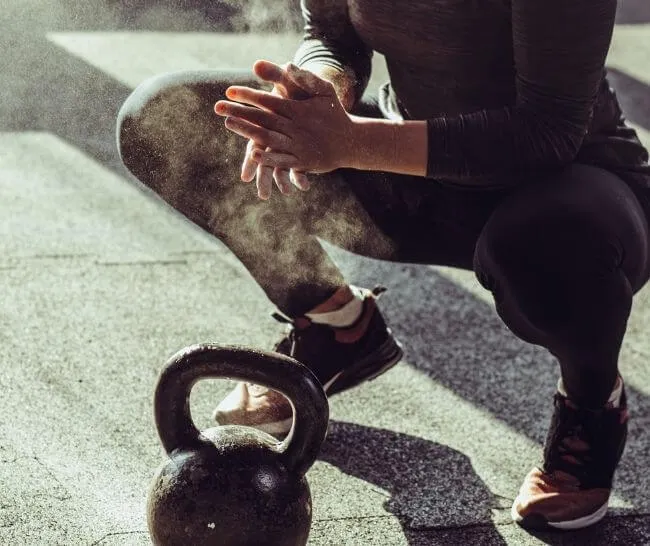Imagine a workout that transforms your body, revs up your metabolism, and helps control your blood sugar all in just a fraction of the time. High-Intensity Interval Training, or HIIT, is precisely that workout. It's a fitness phenomenon redefining how we approach our health and wellness goals. These cardio workouts have emerged as groundbreaking exercise regimens that offer many benefits.
Recent research studies have found that high-intensity interval training may have more health benefits as compared to moderate-intensity continuous exercise.1 Regardless of the form of exercise you choose, remember that engaging in daily exercise is the most essential aspect of maintaining a healthy lifestyle. Now, let's explore how HIIT workouts can be the catalyst you need for a transformative fitness and weight loss journey.
What Is a HIIT Workout?
High-intensity interval training is a form of cardiovascular exercise alternating between short bursts of intense, anaerobic activity at higher heart rate zones followed by brief rest periods or low-intensity recovery. The goal is to push your body to its limits during the higher intensity intervals while training your body to recover quickly during the short rest periods.
You can apply HIIT training to various exercises, including running, cycling, strength training, and even bodyweight exercises like burpees and jumping jacks.
HIIT workouts are known for their efficiency, as they typically last between 20 to 30 minutes, making them a perfect fit for those with busy schedules. They are incredibly effective at burning calories, improving cardiovascular fitness, and providing various health benefits.
{{mid-cta}}
8 Benefits of HIIT Workouts
HIIT workouts offer a wide range of benefits, making it a popular choice for fitness enthusiasts and health and wellness professionals. Here are eight key advantages of incorporating these high-intensity workouts into your fitness routine:
- HIIT Supports Weight Loss
HIIT workouts have been shown to help with weight loss goals due to the increased calorie burn during and after workouts, enhanced fat loss, and regulation of appetite hormones.5
- HIIT Workouts Burn Many Calories
The intense bursts of activity elevate your heart rate and metabolism, resulting in a higher calorie burn than steady-state cardio exercises. This calorie burn continues even after your workout, too.5,7
- HIIT Increases Your Metabolic Rate
High-intensity interval training has been shown to increase your basal metabolic rate (BMR), which means you burn more calories at rest. This metabolic boost can lead to sustained weight management due to increased overall energy expenditure throughout the day.2,5
- HIIT May Improve Oxygen Consumption
The intensity of HIIT workouts challenges your body's capacity to consume oxygen (i.e., your VO2 max). Over time, your VO2 max increases, and your body can utilize more oxygen during physical activity, which directly translates to improved endurance and stamina.2
- HIIT May Reduce Blood Sugar
HIIT has significantly enhanced insulin sensitivity and increased glucose uptake during exercise. This combination results in improved blood sugar control overall.2,6
- HIIT May Improve Body Composition
HIIT helps preserve and build lean muscle mass while targeting visceral (deep) and subcutaneous (surface) fat loss. This is crucial for maintaining a healthy metabolism and achieving a lean, toned physique.5
- HIIT May Improve Cardiovascular Health
These vigorous workouts may reduce the risk of heart disease by increasing your heart rate, decreasing the risk of high blood pressure, and enhancing overall cardiovascular function.2,3,4
- HIIT May Reduce Muscle Fatigue
HIIT can enhance your body's ability to buffer lactic acid, a byproduct of intense exercise that can contribute to muscle fatigue. By improving the capacity to clear lactic acid, HIIT allows you to sustain high-intensity efforts for longer periods and recover faster between workouts.8,9
HIIT workouts offer a well-rounded package of fitness benefits, from time efficiency and calorie burn to cardiovascular health improvements and fat loss. The adaptability allows individuals to tailor their workouts to their fitness level and preferences, making it an accessible and highly effective fitness option for many people. Incorporating HIIT into your routine can help you achieve your fitness goals more efficiently and maintain a healthy, active lifestyle.
How to Do HIIT?
Performing a HIIT full-body workout involves a structured approach to alternating intense exercise intervals with brief recovery periods. Start by selecting the exercises you'll perform during your high-intensity intervals. These can be cardio-based exercises like jumping jacks, sprinting, cycling, or strength-based movements like burpees, push-ups, or mountain climbers. The key is to pick exercises that challenge you and elevate your heart rate.
Next, determine the work-to-rest ratio for your HIIT session. A common ratio for aerobic-focused workouts is 2:1, meaning your work interval is twice as long as your rest interval. For example, if you choose 30 seconds of intense exercise, follow it with 15 seconds of rest. For anaerobic-focused workouts, a work-rest ratio of 1:2 or 1:4 has been found to be more effective.10,11,12
After a sufficient warm-up, begin with your first high-intensity exercise, giving it your all for the specified amount of time (e.g., 30 seconds). Then, rest for a short period (e.g., 15 seconds) to catch your breath and recover your heart rate. You can choose a complete break or active recovery (i.e., marching in place). Repeat this cycle for the desired number of rounds, typically 3-5 rounds or anywhere from 10-30 minutes total.
Beginner HIIT Workout
Here's an example of a beginner-friendly, 10-minute HIIT workout that you can do without any equipment. This HIIT program consists of three exercises and will take approximately 20 minutes to complete, including warm-up and cool-down.
Warm-up (3 minutes):
- Jumping Jacks: Perform jumping jacks at a moderate pace for 1 minute to elevate your heart rate gradually. You can perform a modified version to protect your joints by stepping out to the side with one foot and raising the opposite arm overhead, mimicking the motion of a regular jumping jack without jumping.
- Arm Circles: Stand with your feet shoulder-width apart and extend your arms to the sides. Gradually build from smaller to larger circles for one minute with your arms switching directions halfway through.
- Bodyweight Squats: Do as many reps of bodyweight squats as you can for 1 minute to prepare your lower body for the workout.
HIIT Circuit (10-15 minutes):
Perform each exercise for 20 seconds, followed by a 40-second rest period. Repeat the circuit for a total of 3-5 rounds.
- Push-Ups: Get into a push-up position with your hands shoulder-width apart. Lower your chest towards the ground, keeping your body straight. Push back up to the starting position. Modify by doing knee push-ups if needed.
- Forward Lunges: Stand with your feet hip-width apart. Step forward with your right foot into a lunge position, ensuring both knees are at a 90-degree angle. Push off your right foot to return to the starting position. Alternate legs for each repetition.
- Mountain Climbers: Start in a plank position with your hands under your shoulders. Alternate bringing your knees towards your chest in a running motion, keeping your core engaged and your body in a straight line.
Cool-down (2 minutes):
- March or jog in place slowly for 1 minute to gradually lower your heart rate.
- Perform static stretches for your major muscle groups, holding each stretch for 15-30 seconds. Focus on stretching your legs, arms, chest, and back.
This HIIT routine is designed with longer periods of rest for beginners; however, the ratio can be adjusted depending on your starting fitness level. As you progress, you can increase the intensity and the duration or explore more challenging exercises such as jump squats or burpees.

How Often Should You Do HIIT Workouts?
The frequency of HIIT workouts can vary depending on individual fitness levels and goals. If you are just starting to try HIIT workouts, start with two to three sessions per week with at least one day of rest between sessions to allow your body proper time to recover. This will help you build a foundation of strength and endurance.
Increase your frequency to three to five workouts a week after about two months of consistent HIIT workouts. If you're experiencing severe fatigue or signs of overtraining (i.e., poor sleep quality, irritability, repeated injuries, menstrual cycle irregularities, etc.), then reduce the frequency and prioritize recovery.
HIIT workouts can be safe and highly effective for many individuals, but it's essential to approach them with caution, especially if you're new to exercise or have underlying health conditions. Strategies to help maintain safety when starting HIIT workouts include performing a warm-up and cool-down, ensuring proper form and posture, and stopping anytime you experience symptoms such as severe pain, dizziness, shortness of breath, or nausea. It's essential to push your limits but not to the point of injury.
Since high-intensity interval training puts increased demand on your heart and cardiovascular system, it is important to take extra caution if you have pre-existing health conditions (i.e., hypertension, diabetes, or heart disease). Other conditions to consult with a physician about before starting HIIT workouts include pregnancy, arthritis, stroke, or recent heart attack, and individuals with balance deficits (i.e., vertigo, neuropathy, poor balance, recurring falls).
Bottom Line: Is HIIT Good for Weight Loss?
Engaging in HIIT workouts at least two to three times per week can be a highly effective strategy for burning body fat and achieving weight loss goals due to its calorie-burning capacity, ability to target visceral and subcutaneous fat, preservation of lean muscle mass, and enhanced metabolic rates during and after exercise.
In addition, HIIT workouts are known for their time efficiency, as each workout only lasts 20-30 minutes, which can be helpful for individuals needing to lose weight within their busy schedules. When combined with a balanced diet and healthy lifestyle, HIIT can be a valuable tool on your journey to achieving weight loss, improving your body composition, and maintaining a healthy weight.

Using a CGM with Signos: Real-Time Data, Backed by AI
Signos pairs a real-time glucose biosensor with AI trained on tens of millions of data points to deliver personalized, science-backed guidance for weight management and health. See exactly how your body responds, and take action.
Learn how it works. Ready to get started? Join now.
Topics discussed in this article:
References
- Karlsen, T., Aamot, I. L., Haykowsky, M., & Rognmo, Ø. (2017). High intensity interval training for maximizing health outcomes. Progress in cardiovascular diseases, 60(1), 67-77.
- Gibala, M. J., Little, J. P., MacDonald, M. J., & Hawley, J. A. (2012). Physiological adaptations to low‐volume, high‐intensity interval training in health and disease. The Journal of physiology, 590(5), 1077-1084.
- Guiraud, T., Nigam, A., Gremeaux, V., Meyer, P., Juneau, M., & Bosquet, L. (2012). High-intensity interval training in cardiac rehabilitation. Sports medicine, 42, 587-605.
- Kessler, H. S., Sisson, S. B., & Short, K. R. (2012). The potential for high-intensity interval training to reduce cardiometabolic disease risk. Sports medicine, 42, 489-509
- Wewege, M., Van Den Berg, R., Ward, R. E., & Keech, A. (2017). The effects of high‐intensity interval training vs. moderate‐intensity continuous training on body composition in overweight and obese adults: a systematic review and meta‐analysis. Obesity Reviews, 18(6), 635-646.
- Kong, Z., Sun, S., Liu, M., & Shi, Q. (2016). Short-term high-intensity interval training on body composition and blood glucose in overweight and obese young women. Journal of diabetes research, 2016.
- Greer, B. K., O’BRIEN, J. U. L. I. E., Hornbuckle, L. M., & Panton, L. B. (2021). EPOC comparison between resistance training and high-intensity interval training in aerobically fit women. International journal of exercise science, 14(2), 1027.
- Dipla, K., Tsirini, T., Zafeiridis, A., Manou, V., Dalamitros, A., Kellis, E., & Kellis, S. (2009). Fatigue resistance during high-intensity intermittent exercise from childhood to adulthood in males and females. European journal of applied physiology, 106, 645-653.
- Jacobs, R. A., Flück, D., Bonne, T. C., Bürgi, S., Christensen, P. M., Toigo, M., & Lundby, C. (2013). Improvements in exercise performance with high-intensity interval training coincide with an increase in skeletal muscle mitochondrial content and function. Journal of applied physiology, 115(6), 785-793.
- Moghaddam, M., Estrada, C. A., Muddle, T. W., Magrini, M. A., Jenkins, N. D., & Jacobson, B. H. (2021). Similar anaerobic and aerobic adaptations after 2 high-intensity interval training configurations: 10: 5 s vs. 20: 10 s Work-to-Rest Ratio. The Journal of Strength & Conditioning Research, 35(6), 1685-1692.
- Ceylan, B., & Balci, S. S. (2023). The Effects of Various Work-to-Rest Ratios During High-Intensity Intermittent Exercises on Uchi-Komi Performance and Postexercise Heart Rate and Blood Lactate in Judo Athletes. Journal of Strength and Conditioning Research, 37(6), 1231-1236.
- Seo, M. W., Lee, J. M., Jung, H. C., Jung, S. W., & Song, J. K. (2019). Effects of Various Work-to-rest Ratios during High-intensity Interval Training on Athletic Performance in Adolescents. International journal of sports medicine, 40(8), 503–510. https://doi.org/10.1055/a-0927-6884




.svg)




.webp)





.svg)
.svg)
.svg)
.svg)
.svg)
.svg)
.svg)
